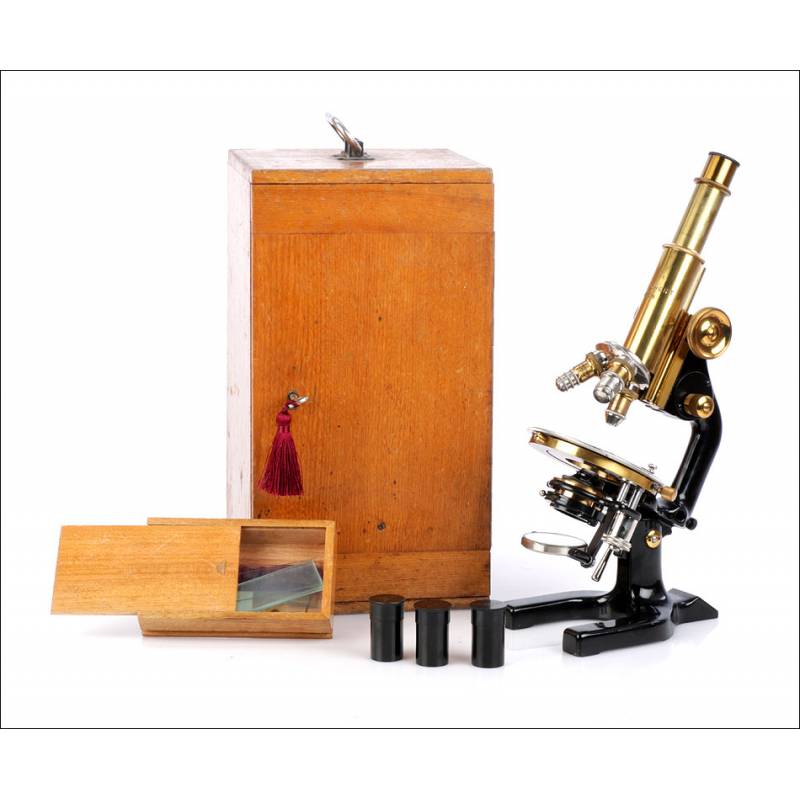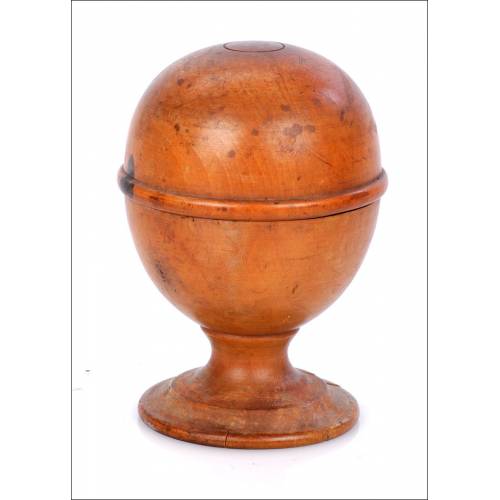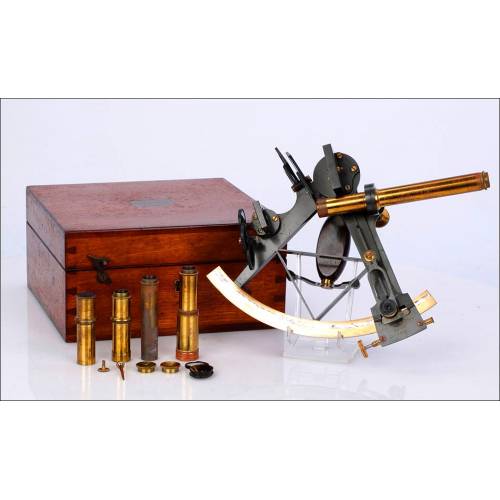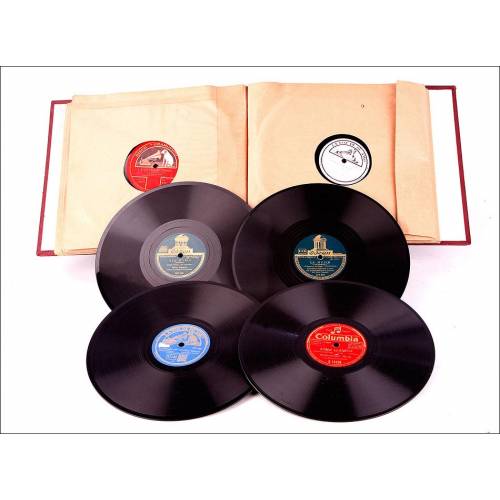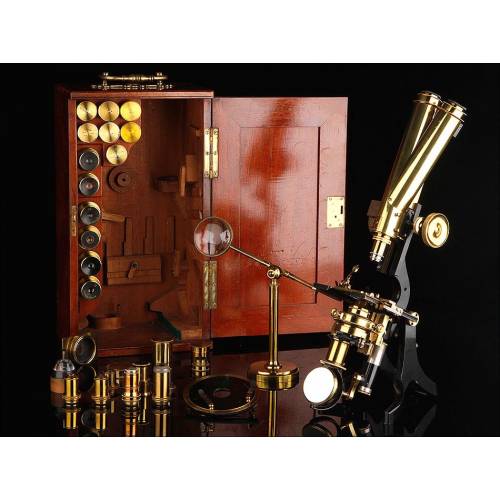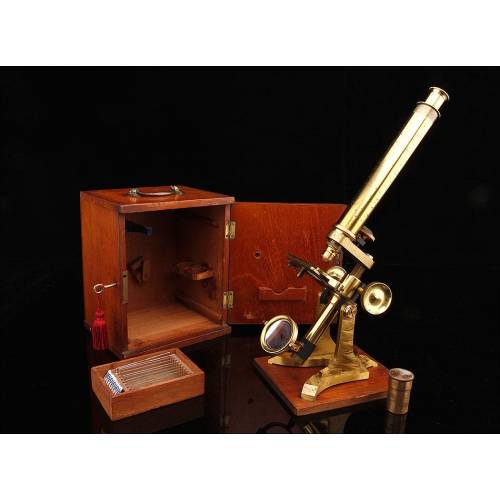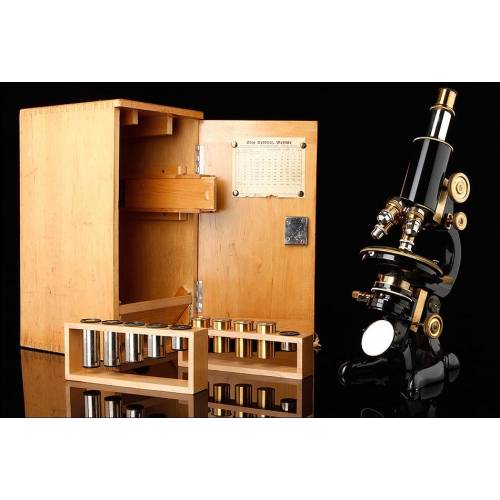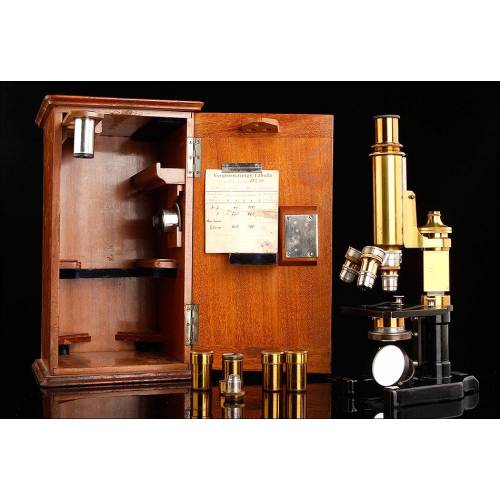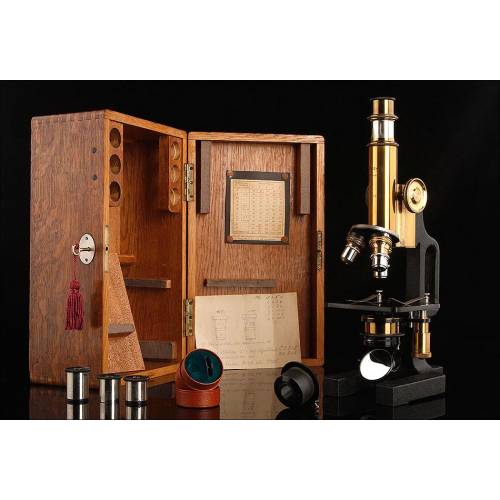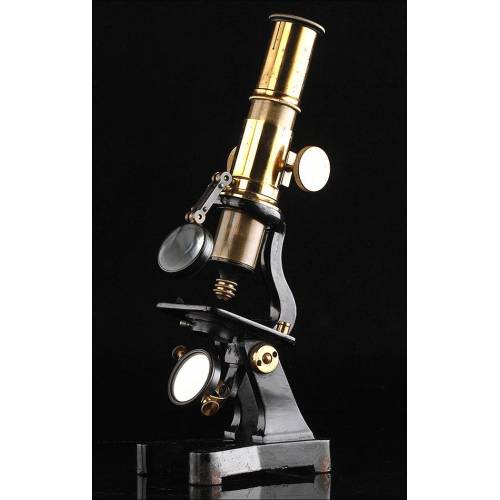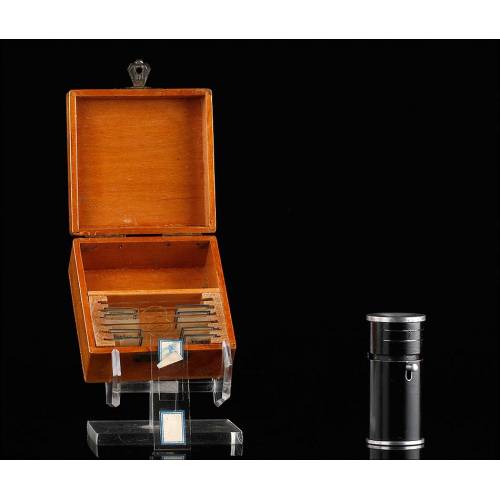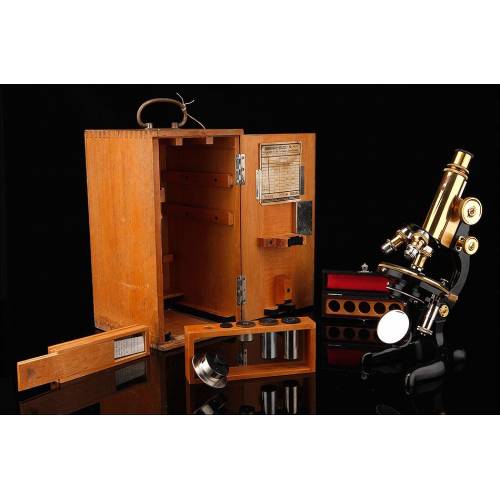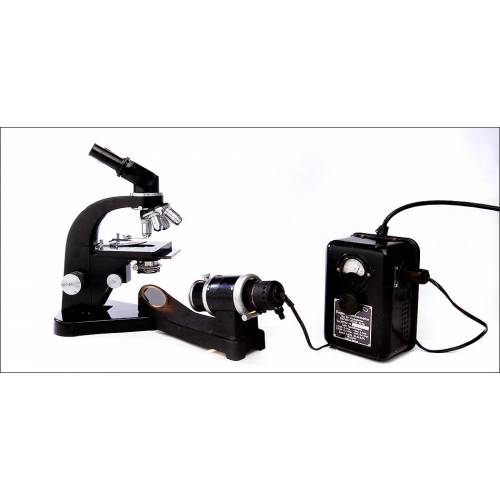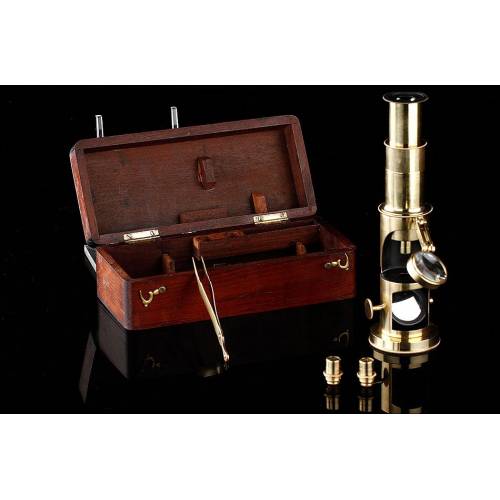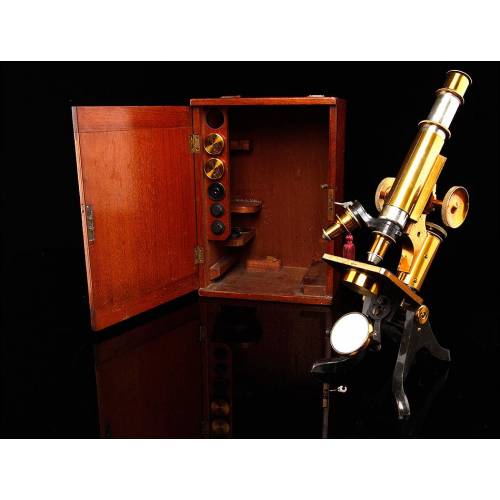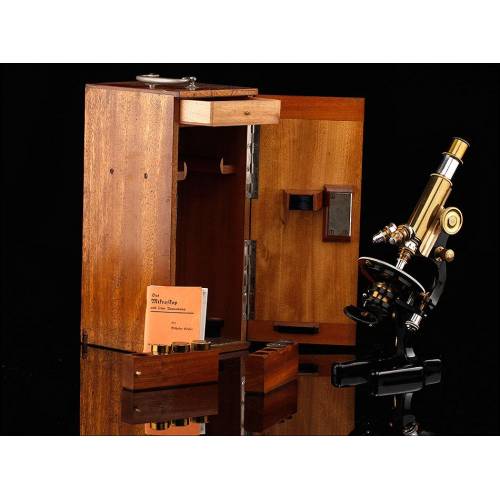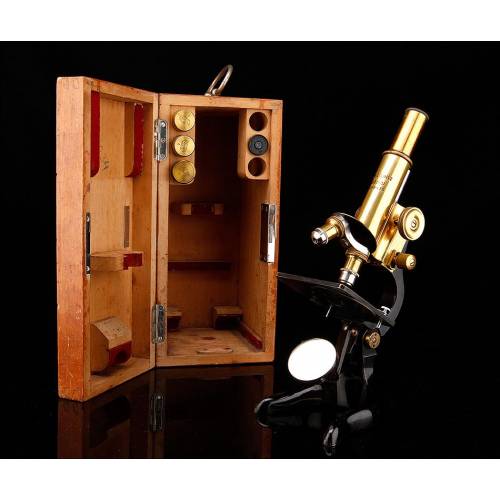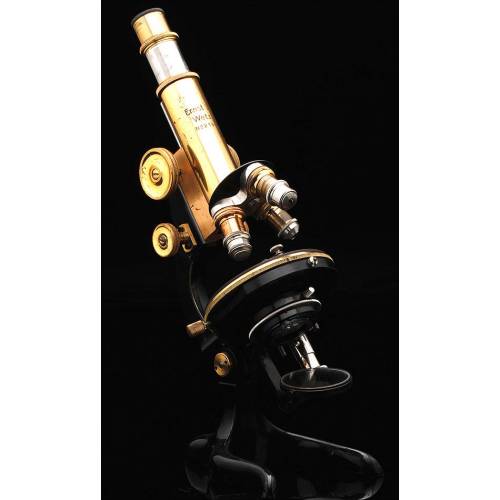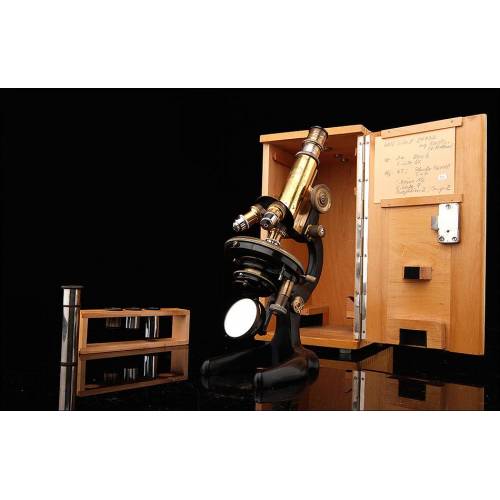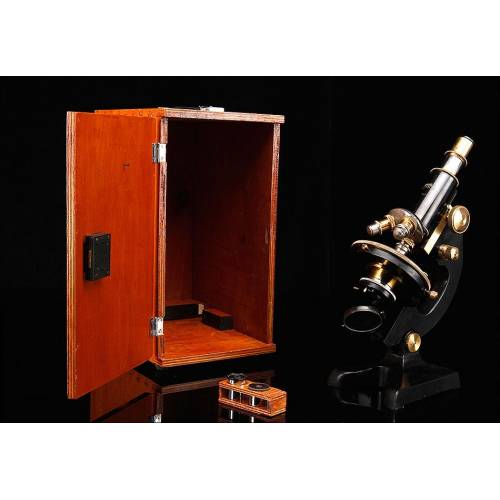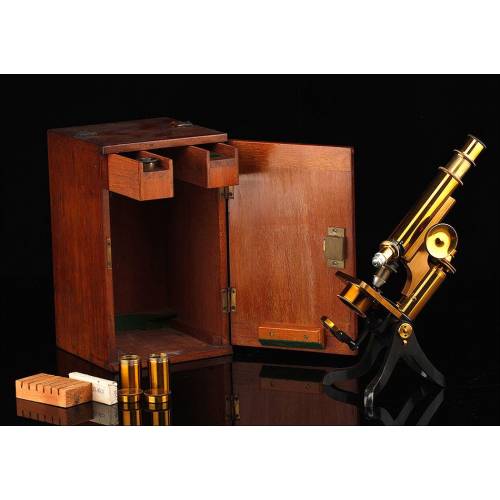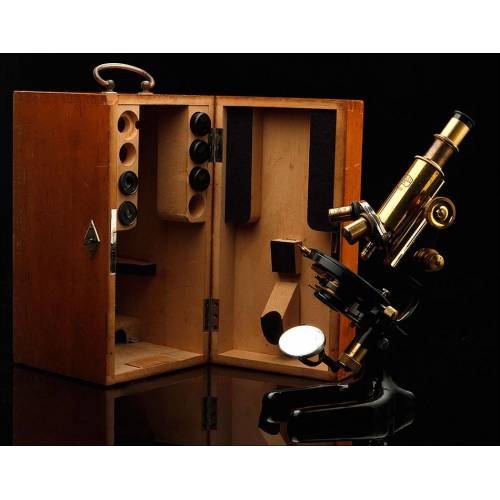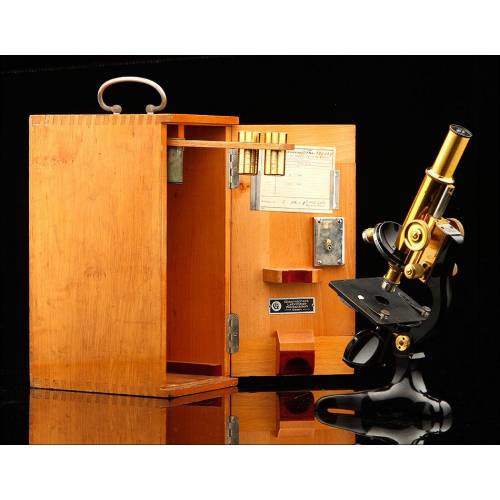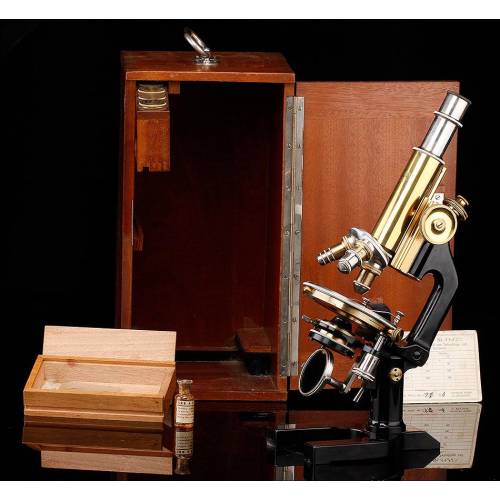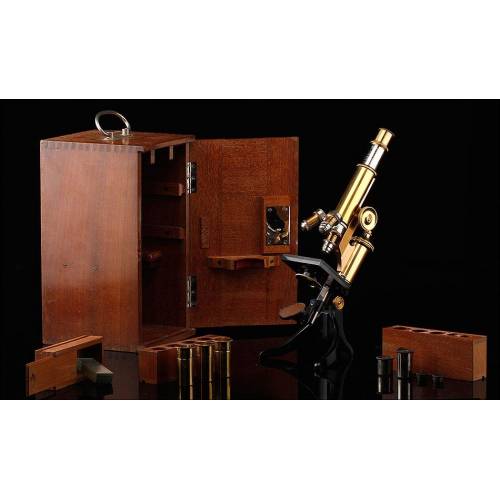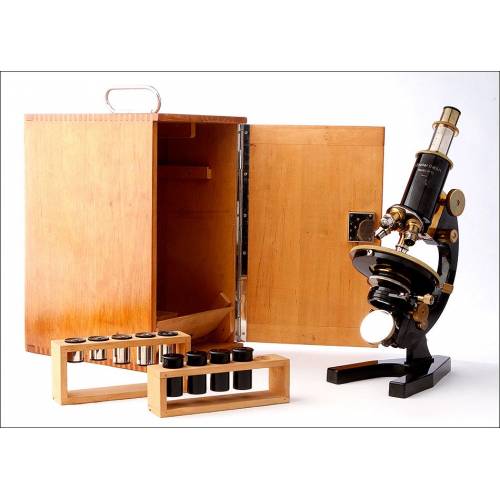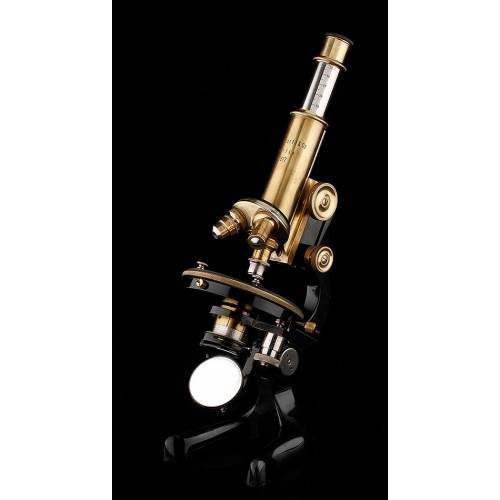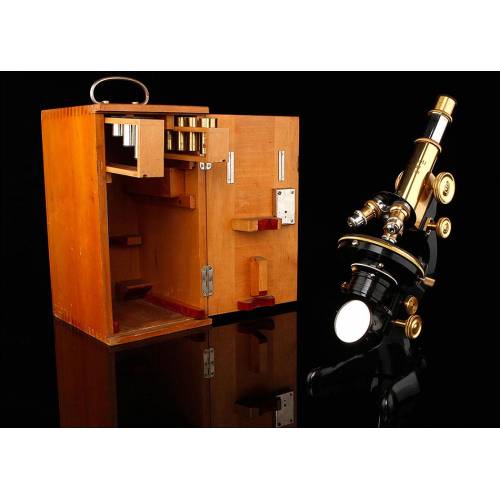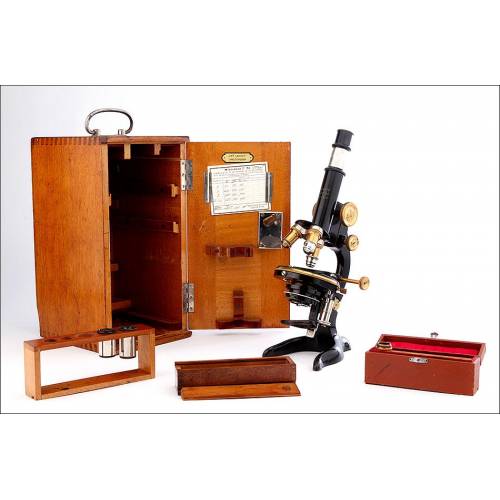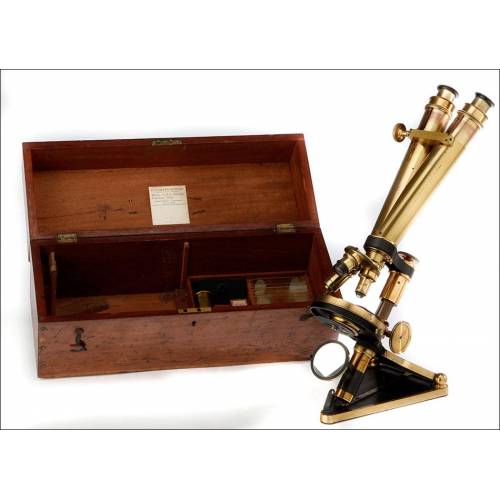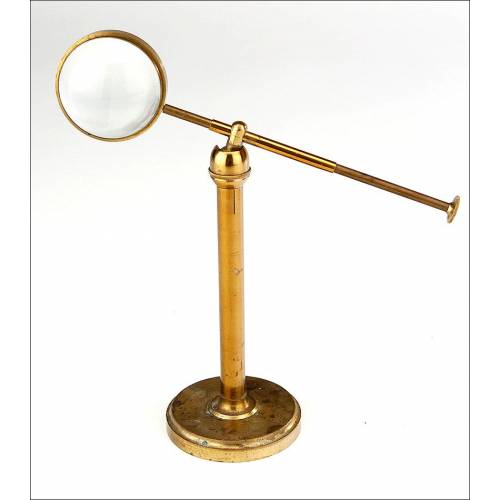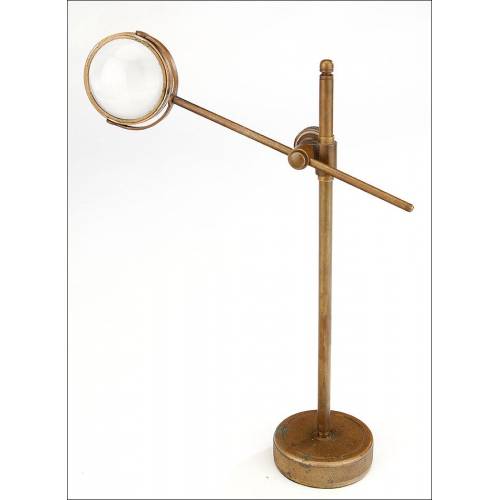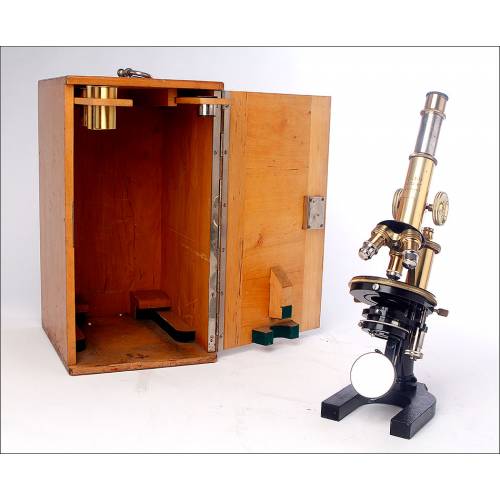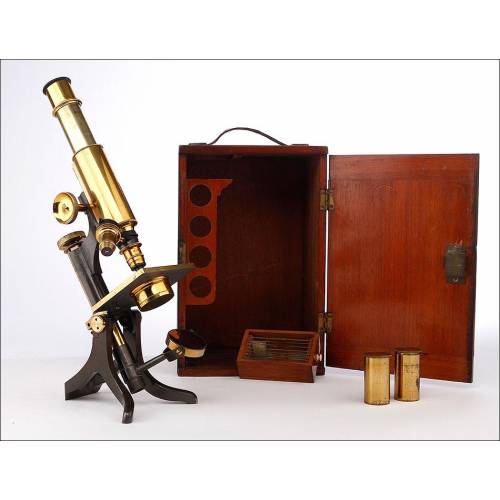C-578
Antique Reichert Microscope. Ramon y Cajal. Germany, 1927
Magnificent German Reichert microscope in excellent condition. Complete and with original period case. Signed and numbered.
Sold!
Outstanding antique Reichert microscope made in Germany in 1927, complete and in its original case. This is the same model used by the Spanish Nobel Price in Meicicine, Santiago Ramón y Cajal for his scientific surveying job: for its precision and high quality, Reichert microscopes were the favorites of the Spanish scientist and Nobel Prize. The device that we can see in the images shows a really good condition and preserves its original beauty and functionality. It mounts a three-lens revolving nosepiece and double-sided mirror, both in perfect condition; both make it possible to use the microscope to watch samples, just like when it was made around 90 years ago. The microscope has a cast iron horseshoe foot with a fine glossy black enameled finish. The enamel is amazingly preserved and looks shiny and even, creating a lovely contrast with the golden and silvery metal parts. The brass mobile component parts are covered by the original transparent lacquered finish, which does not only provide the metal with a gorgeous patina but has also protected it from the ravages of time. At the foot we can see the engraved manufacturers signature, W. REICHERT WIEN, and the serial number Nº 70013. This serial is also engraved in the wooden case and has been handwritten in the paper sheet with information about the microscope. The storing case is made of golden-colored solid mahogany wood; the lock and the key are the original ones and remain in working order. This antique Reichert microscope takes us back to a fascinating era of scientific discoveries. Its beauty and high quality survive after decades of use and turn it into a real collectors item. Measurements: Width: 6.7 in / 17 cm. Height: 15 in / 38 cm. C. Reichter History The microscope company Reichter was founded by Carl Reichter, son-in-law of Ernst Leitz, in 1876. After learning the business with Leitz, he moved to Vienna, Austria and started his own company. By 1930 they had already manufactured their 100000th microscope. The firm carved a niche in the microscope-manufacturing field and kept on in business for some decades, but in 1962 the family sold the company to the American Optical Company. Six years after, this firm was acquired in turn by the pharmaceutical company Warner Lambert. After some mergings, in 1999 Reichter gave up making instruments and started preparing samples for transmission electron microscopes.

